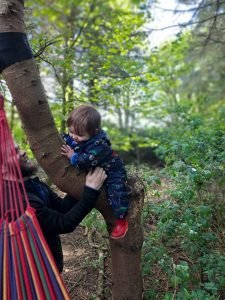In today’s fast-paced digital world, children are spending less time outdoors and more time in structured indoor environments. Forest School offers an alternative approach, taking learning beyond four walls and into the heart of nature. This educational model nurtures creativity, resilience, and a deep connection with the natural world.
What is Forest School?
Forest School is an outdoor, child-led learning experience where children explore, play, and develop skills in a natural environment. Originating in Scandinavia, this approach has gained global recognition for its ability to foster independence, confidence, and problem-solving abilities. Sessions often take place in woodlands, forests, or parks and focus on hands-on, experiential learning.
Core Principles of Forest School
1. Child-Led Learning – Activities are guided by the children’s interests and curiosity rather than a rigid curriculum.
2. Risk-Taking and Resilience – Climbing trees, using tools, and engaging in physical challenges help children assess risks and build confidence.
3. Nature Immersion – Regular sessions in the same environment foster a deep bond with nature, enhancing observational skills and environmental awareness.
4. Holistic Development – Forest School nurtures emotional, social, cognitive, and physical development.
5. Sustainability and Stewardship – Children learn to respect and care for the natural world, fostering a sense of responsibility for the environment.
Benefits of Forest School
1. Improves Mental and Physical Well-being
Being in nature reduces stress, boosts mood, and encourages physical activity. Studies have shown that outdoor play enhances concentration and lowers anxiety levels in children.
2. Encourages Creativity and Problem-Solving
Without structured toys or screens, children use their imagination to build, create, and explore. Whether constructing a den or identifying animal tracks, they develop problem-solving skills naturally.
3. Develops Social and Communication Skills
Forest School promotes teamwork and cooperation. Through shared activities like building shelters or gathering materials, children learn to communicate, negotiate, and support each other.
4. Strengthens Connection with Nature
Regular exposure to forests fosters environmental responsibility. Children learn about ecosystems, wildlife, and sustainability, encouraging them to become stewards of the planet.
5. Enhances Academic Learning
While it may seem unstructured, Forest School integrates key academic concepts:
Math – Counting sticks, measuring tree trunks, estimating distances.
Science – Observing weather patterns, studying plant life, understanding animal behavior.
Literacy – Storytelling, descriptive writing, journaling about outdoor discoveries.
Who Can Benefit from Forest School?
Forest School is suitable for all ages and abilities but is particularly beneficial for:
Children who thrive in hands-on learning environments.
Those who struggle with traditional classroom settings.
Kids who benefit from movement-based learning.
Anyone who enjoys nature and outdoor play.
How to Get Started
Find a local Forest School program – Many schools and organizations offer sessions for different age groups. Contact Embers on embersoutdoorlearning@gmail.com
Incorporate nature learning at home – Take children for walks, encourage outdoor play, and engage in activities like bug hunting or leaf identification.
Support outdoor education initiatives – Advocate for nature-based learning in your community.
Final Thoughts
Forest School is more than an educational method—it’s a way of life that reconnects children with nature, fosters independence, and builds essential life skills. In a world where screen time is on the rise, Forest School offers a breath of fresh air—literally and figuratively.

